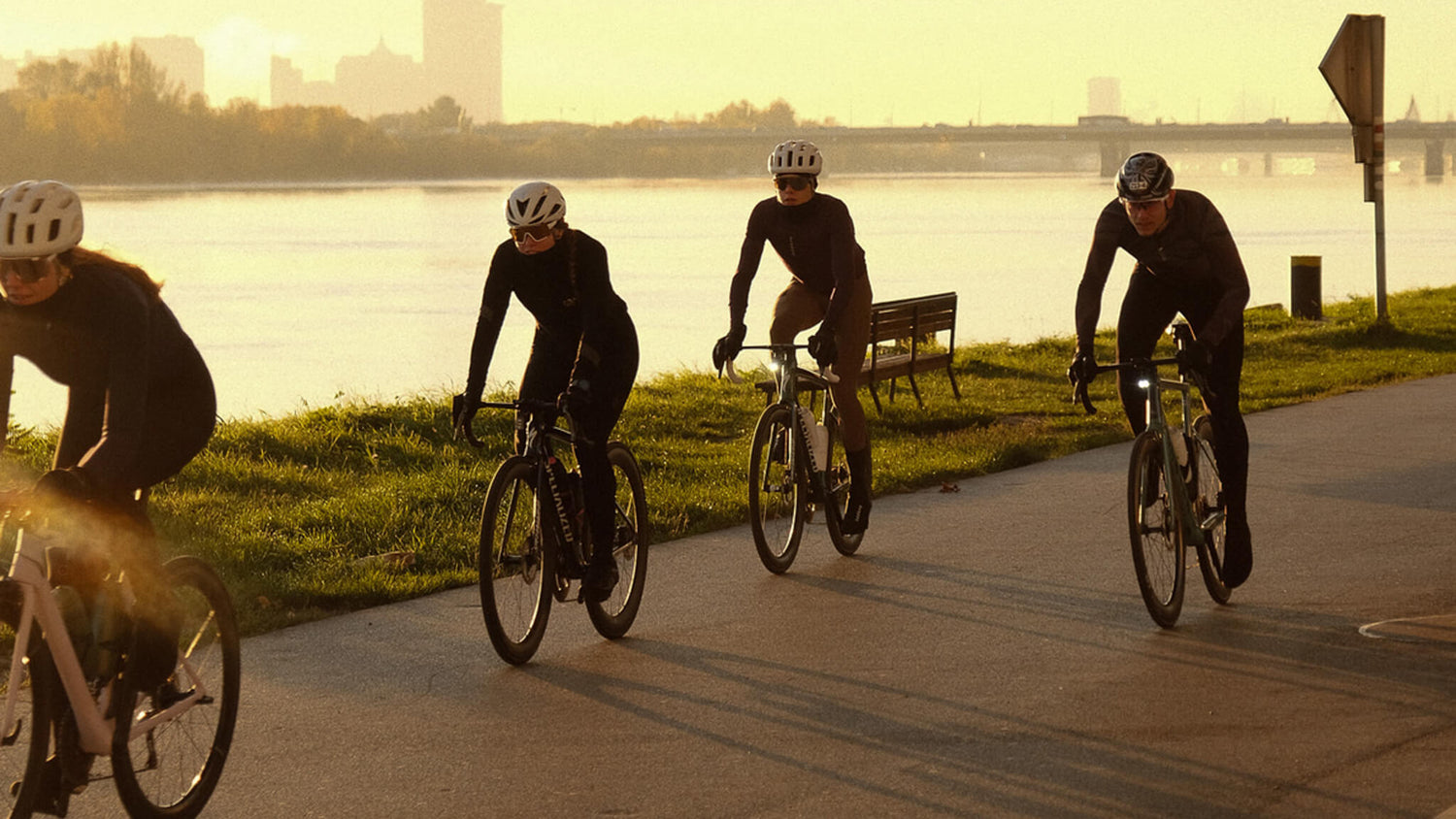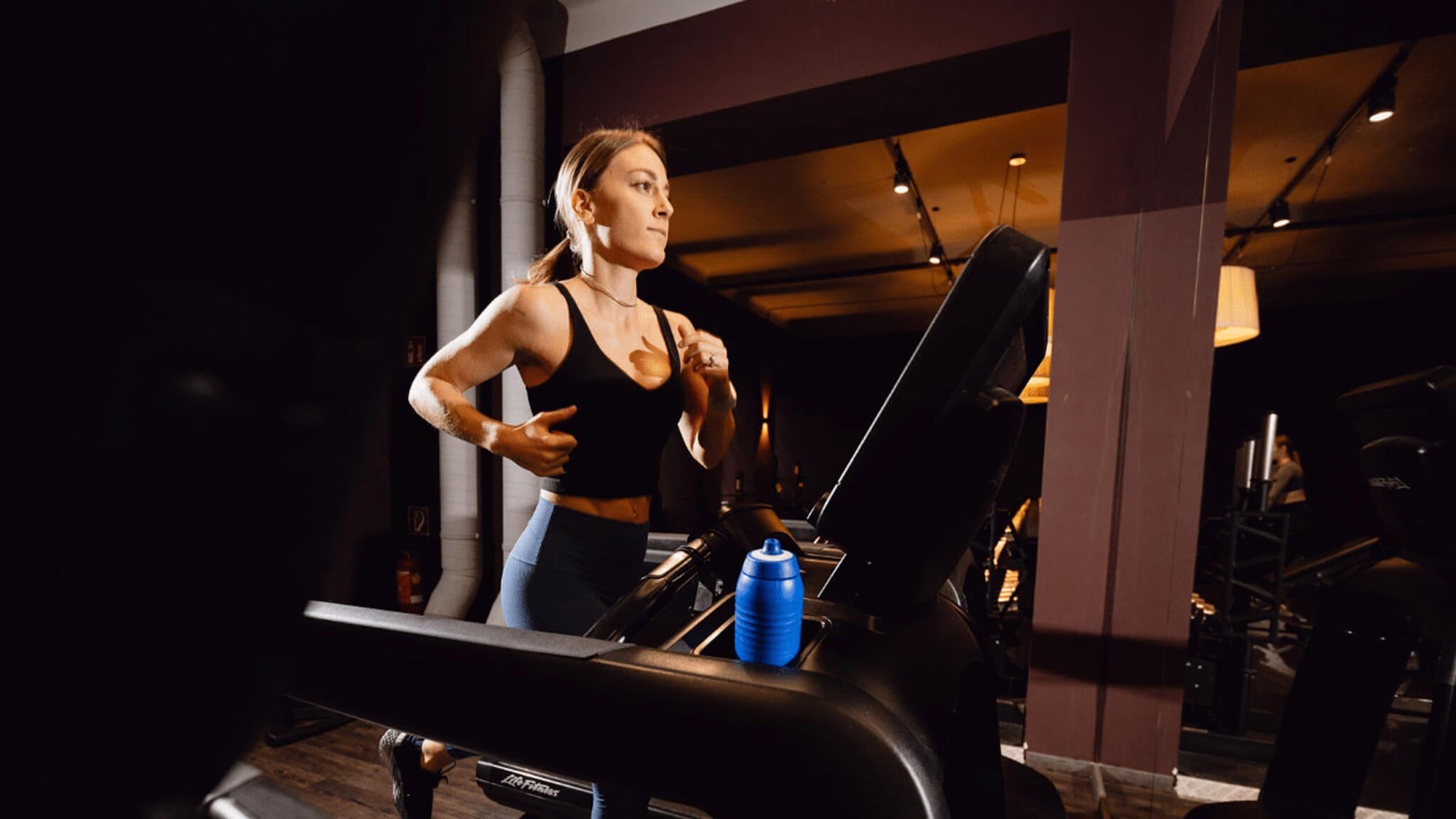How to stay fit and healthy during the cold season
Winter presents cyclists with particular challenges: low temperatures, shorter days, and adverse weather conditions often make outdoor training more demanding. However, with the right preparation and structure, winter training can lay the foundation for a successful cycling season. Here are 10 tips for effective and safe road bike training in winter:
1. Set a clear goal
A defined goal increases motivation and gives your training a clear direction. Goal-oriented training promotes perseverance and helps to maintain focus. Define what you want to achieve in the coming season - be it the first participation in a cycling marathon, a podium finish or a multi-day tour. With a goal in mind, it is easier to stick to it even in adverse weather conditions or within the monotonous four walls.
2. Plan a short break from the season
A short break in autumn is important to prepare the body and mind for the upcoming training phase. Studies show that regeneration phases not only help physically, but also mentally to rebuild motivation. One to two weeks without intensive training support recovery and provide new energy. However, note that a longer break can lead to a decrease in performance – it is important to keep the break measured.
3. Variety through alternative sports
Complementary sports such as cross-country skiing, running or strength training prevent muscular imbalances and strengthen the entire body. They not only improve endurance but also help to compensate for the one-sided strain of cycling. Varied training strengthens general fitness and your muscles. The challenge is to find a good balance to avoid overloading unfamiliar sports.
4. Focus on basic training
In winter, training should primarily aim at building the endurance base. Long, moderately intensive units in the aerobic range promote fat metabolism and lay the foundation for more performance-intensive units in the spring. Such basic units should account for around 70–80% of the training volume in order to sustainably strengthen endurance.
5. Efficient Training with Intervals
Targeted intervals improve cardiovascular fitness, maximum oxygen uptake, metabolism and anaerobic capacity.
Since daylight is often limited in winter, short and intensive units are suitable for making outdoor training efficient.
Interval training on the roller is a good option, as the units can be planned and carried out precisely. With the help of training apps, heart rate and power meters, the intensity can be optimally controlled and monitored. These tools help to find the right load and ensure that the units are carried out exactly in the planned range.
6. Dress warmly and functionally
To master the cold, functional and multi-layered clothing is essential. The layering principle protects against heat loss and at the same time ensures that moisture is wicked away from the body. It is particularly important to protect the extremities with gloves, thermal socks and a hat under the helmet. Well-thought-out clothing ensures that you remain comfortable and efficient even at low temperatures.
7. Increase your visibility
Since the days are shorter and the lighting conditions are worse, you should wear reflective, eye-catching clothing and use powerful lighting. Reflective materials on your jacket, gloves, helmet, and shoe covers will increase your visibility from all directions and help drivers recognize you early. Statistics show that reflective clothing and highly visible accessories significantly reduce the risk of accidents in poor lighting conditions. Neon colors make you much more visible in traffic – here, safety counts more than style.
8. Use winter-proof equipment
In winter, the risk of tire punctures increases due to grit and road salt. High-quality, puncture-proof tires and mudguards or so-called „Ass Savers“ are therefore essential to complete the training without unwanted stops. While classic mudguards cover the entire tire area and protect against splash water, „Ass Savers“ are a practical, minimalist solution for days when only light protection is needed. An additional advantage: they keep splash water away and ensure that you don't cool down unnecessarily. Invest in winter-proof equipment to maximize comfort and safety during your training sessions.
9. Plan recovery and rewards
Mental motivation is crucial in winter. After long training sessions, it is helpful to schedule targeted relaxation phases, such as sauna sessions, massages, or warm baths. These measures promote blood circulation and support muscle regeneration, which helps you stay motivated and efficient. Studies show that such regeneration methods not only increase well-being but also shorten recovery times, thus improving training quality.
10. Ensure Adequate Hydration – Healthy and Free of Harmful Substances
Even in winter, the body loses a lot of fluid while cycling, often more than the cool environment suggests. Therefore, it is essential to drink regularly to support the muscles and maintain performance. To stay healthy and avoid harmful substances, it is recommended to use clean and safe water bottles that do not release microplastic particles. Such bottles, like the KEEGO, reliably keep your drink free from unwanted substances even in the cold and contribute to long-term health – ideal if you spend many hours in the saddle.
More drinking tips for winter
Unsure? Get professional support
A qualified trainer can help you analyze your current fitness level and create an effective, individual training plan based on it. Likewise, a professional bike fitting can help you optimally adjust your bike to your body measurements. This way, you can not only increase your performance, but also prevent injuries and make your training more efficient. Professional advice ensures that you get the most out of your winter training - both in terms of fitness and technique.
Sources:
- Cheung, S. S., & Sleivert, G. G. (2010). Lowering ambient temperature reduces self-paced exercise intensity in hot, humid conditions. European Journal of Applied Physiology.
- Drew, M. K., et al. (2018). Injury risk is different between elite male and female Australian footballers: a five-year investigation. Journal of Science and Medicine in Sport.
- Hawley, J. A., & Burke, L. M. (2010). Carbohydrate availability and training adaptation: effects on cell metabolism. Exercise and Sport Sciences Reviews.
- Laursen, P. B., & Jenkins, D. G. (2012). The scientific basis for high-intensity interval training: optimizing training programs and maximizing performance in highly trained endurance athletes. Sports Medicine.
- Reinschmidt, C., & Rieckert, M. (2014). Training in winter: Dangers and preventive measures for endurance athletes. German Journal of Sports Medicine.
- Schröder, S., & Weber, T. (2016). Alternative sports in cycling: Effects on performance and prevention of injuries. German Journal of Sports Science.
- Müller, T., & Mayer, R. (2021). Functional clothing in outdoor sports: Performance optimization through temperature and moisture regulation. Journal for Textile Technology.
- Weber, K. (2021). Fluid supply in endurance sports: Factors for optimal hydration in winter. Sport und Medizin.
- Behrens, M. & Schmidt, H. (2020). Sustainable drinking bottles: A guide to environmentally conscious and non-toxic drinking solutions in sports. Sustainability in Sports Journal.


